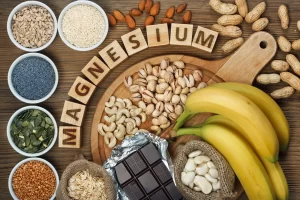Eat the Rainbow
The plant chemicals that create the gorgeous palate of colors in our fruits and vegetables possess many health benefits, from cellular repair to healthy vision and cancer prevention. To fully reap their spectrum of benefits, it’s important to eat a variety of colors weekly, if not daily. Use this list for ideas, inspiration, and a way to track what you consume in any given day. Remember that this list is not all-inclusive: your part of the world or a local farmers market might feature different seasonal fruits and veggies. Or you might come across a fruit or vegetable that is in a different color than what is listed. They all count! But most importantly, have fun with what you eat!
![]()
(contain lycopene, cyanins; antioxidant vitamins A, C)
Apple
Beets
Blood Oranges
Cherries
Cranberries
Kidney beans
Pink grapefruit
Pomegranate
Radicchio Raspberries
Red bell, chili peppers
Red grapes
Red lentils
Red pears
Red skinned potatoes
Red tomatoes
Red, pink radishes
Rhubarb (edible stems)
Strawberries
Watermelon
![]()
(contain carotenoids for vitamin A, bioflavonoids, vitamins C, B6, potassium)
Apricots
Bitter melon
Cantaloupe
Carrots
Guava
Mango
Orange bell peppers
Orange tomatoes
Oranges
Papaya
Peaches
Persimmons
Sweet potatoes
Tangerines
Winter squashes, assorted
![]()
(carotenoids, bioflavonoids, vitamin C, magnesium, potassium, manganese)
Bananas
Crookneck, summer squash
Golden beets
Golden kiwi
Grapefruit
Lemons
Pineapple
Plantain
Rutabaga
Sweet corn
Yellow bell peppers
Yellow onion
Yellow tomatoes
Yellow watermelon
![]()
(chlorophyll, carotenoids, indoles, lucosinolates, beta-carotene, iron, calcium, folate)
Artichokes
Asparagus
Avocado
Basil
Bok Choy
Broccoli
Broccoli rabe
Broccolini
Broccoli, alfalfa, sunflower sprouts
Brussels sprouts
Cactus
Celery
Chayote squash
Chili peppers
Cilantro
Cucumbers
Edamame
Endive
Gooseberries
Green apples
Green beans
Green eggplants
Green grapes
Green pears
Green bell peppers
Green tomatoes
Green, napa, savoy cabbage
Honeydew
Kale
Kiwi
Leeks
Lettuce (assorted types)
Lima beans
Limes
Mint, spearmint
Okra
Oregano
Parsley
Passion flower
Peas
Purslane
Quince
Rosemary
Scallions
Snow, sugar snap, green peas
Spinach
Thyme
Tomatillo
Watercress
Zucchini
![]()
(anthocyanin, ellagic acid, vitamin A, flavonoids)
Black beans
Black currants
Black radish
Black, kalamata olives
Blackberries
Blueberries
Cosmic carrots
Figs
Huckleberries
Mulberry
Plums, prunes
Pumpkin
Purple asparagus
Purple bell peppers
Purple cauliflower
Purple eggplants
Purple grapes, raisins
Purple kale
Purple kohlrabi
Purple potatoes
Purple radish
Purple string beans
Purple tomatoes
Red cabbage
Red leaf lettuce
Red onion
![]()
(anthoxanthins, vitamins C & K, folate)
Bamboo shoot
Bean sprouts
Bosc pears
Cardoon
Cauliflower
Chickpeas
Coconut
Daikon radish
Dates
Dragonfruit
Fennel
Garlic
Jerusalem artichokes (sunchokes)
Jicama
Lentils
Lychee
Mushrooms (assorted types)
Northern, butter, cannellini, & pinto beans
Parsnips
Shallots
Tamarind
Taro
Turnips
Water chestnut
Wax, russet potatoes
White eggplants
White mulberry
White onion
White peaches, nectarines
Additional phytonutrient-rich foods:
Assorted edible flowers
Other herbs
Other spices
Foraged plants
If you would like some customized support to delve deeper into your health and nutrition, let’s chat.
© Purpose Inc., The School of Applied Functional MedicineTM





